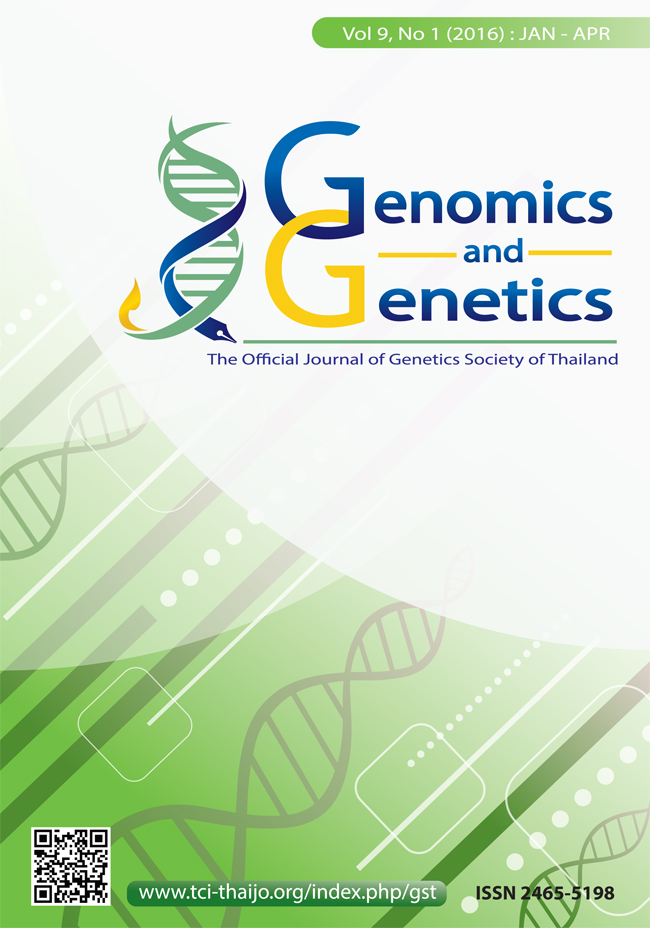In silico approaches for pathogenicity prediction of missense variants of uncertain significance (VUS) in ADPKD
Keywords:
ADPKD, variant of uncertain significance (VUS), in silico, pathogenicity, missenseAbstract
Autosomal dominant polycystic kidney disease (ADPKD) is the most common dominantly inherited kidney disease, being caused by mutations in PKD1 (85%) and PKD2 (15%). Approximately 25% of all PKD1 mutations are pathogenic missense, but additional 12.8% of those are reported as indeterminate or missense variants of uncertain significance (VUS), of which the deleterious nature are unclear in clinical practice. Functional studies to assess the impact of missense variants, particularly for PKD1, are difficult due to the large size and ambiguous functions of the proteins, polycystins. A variety of in silico tools were developed to evaluate interspecies variations and biochemical impacts of amino acid substitutions of missense VUS. To evaluate the tool suitability for PKD1 and PKD2, we applied additional 12 state-of-the-art web-based tools with their claimed superior performances based on different algorithms for the prediction in parallel with the three benchmark programs (PolyPhen2, SIFT and MutationTaster). A total of 15 tools were assessed in a gene-specific manner with PKD1 and PKD2 variants of known pathogenicity from the PKDB mutation database. We found that each of the genes had suitable predictions from different sets of tools. Combined uses of 3, 5, 8 and 12 tools with high performance in descending order (in which the benchmarks were excluded) gave consensus predictions for the selected nine VUS in PKD1, except one VUS which might have a mild pathogenicity that only the use of 12 tools predicted differently. In this situation, using more numbers of tools might prevent the misinterpretation of milder VUS. Classification of the pathogenicity of the VUS in PKD1 and PKD2 became an essential part of molecular diagnosis of ADPKD and is useful for a clinical decision and would expand knowledge of mutation spectrum in ADPKD.References
Adzhubei IA, Schmidt S, Peshkin L, Ramensky VE, Gerasimova A, Bork P, Kondrashov AS, Sunyaev SR (2010) A method and server for predicting damaging missense mutations. Nat Methods 7: 248–9.
Bendl J, Stourac J, Salanda O, Pavelka A, Wieben ED, Zendulka J, Brezovsky J, Damborsky J (2014) PredictSNP: robust and accurate consensus classifier for prediction of disease-related mutations. PLoS Comput Biol 10: e1003440.
Bromberg Y, Rost B (2007) SNAP: predict effect of non-synonymous polymorphisms on function. Nucleic Acids Res. 35: 3823–35.
Capriotti E, Calabrese R, Casadio R (2006) Predicting the insurgence of human genetic diseases associated to single point protein mutations with support vector machines and evolutionary information. Bioinformatics 22: 2729–34.
Capriotti E, Altman RB (2011) Improving the prediction of disease-related variants using protein three-dimensional structure. BMC Bioinformatics 12: 1–10.
Capriotti E, Altman RB, Bromberg Y (2013) Collective judgment predicts disease-associated single nucleotide variants. BMC Genomics 14: S2.
Choi Y, Sims GE, Murphy S, Miller JR, Chan AP (2012) Predicting the Functional Effect of Amino Acid Substitutions and Indels. de Brevern AG, editor. PLoS ONE 7: e46688.
Kumar P, Henikoff S, Ng PC (2009) Predicting the effects of coding non-synonymous variants on protein function using the SIFT algorithm. Nat Protoc 4: 1073–81.
Li B, Krishnan VG, Mort ME, Xin F, Kamati KK, Cooper DN, Mooney SD, Radivojac P (2009) Automated inference of molecular mechanisms of disease from amino acid substitutions. Bioinforma Oxf Engl 25: 2744–50.
Pappalardo M, Wass MN (2014) VarMod: modelling the functional effects of non-synonymous variants. Nucleic Acids Res 42: W331–6.
Reva B, Antipin Y, Sander C (2011) Predicting the functional impact of protein mutations: application to cancer genomics. Nucleic Acids Res. 39: e118.
Richards S, Aziz N, Bale S, Bick D, Das S, Gastier-Foster J, Grody WW, Hegde M, Lyon E, Spector E, et al. (2015) Standards and guidelines for the interpretation of sequence variants: a joint consensus recommendation of the American College of Medical Genetics and Genomics and the Association for Molecular Pathology. Genet Med 17(5):405-23.
Schwarz JM, Rödelsperger C, Schuelke M, Seelow D (2010) MutationTaster evaluates disease-causing potential of sequence alterations. Nat Methods 7: 575–6.
Shihab HA, Gough J, Cooper DN, Stenson PD, Barker GLA, Edwards KJ, Day IN, Gaunt TR (2013) Predicting the functional, molecular, and phenotypic consequences of amino acid substitutions using hidden Markov models. Hum Mutat 34: 57–65.
Tan YC, Blumenfeld J, Rennert H (2011) Autosomal dominant polycystic kidney disease: genetics, mutations and microRNAs. Biochim Biophys Acta 1812: 1202–12.
Thongnoppakhun W (2012) Improved molecular analysis of the genes causing autosomal dominant polycystic kidney disease (ADPKD): an efficient approach using denaturing high performance liquid chromatography (DHPLC). Final research report. Bangkok: The Thailand Research Fund (TRF); 106 p.
Yates CM, Filippis I, Kelley LA, Sternberg MJ (2014) SuSPect: Enhanced Prediction of Single Amino Acid Variant (SAV) Phenotype Using Network Features. J Mol Biol 426: 2692–701.
Zeng S, Yang J, Chung BHY, Lau YL, Yang W (2014) EFIN: predicting the functional impact of nonsynonymous single nucleotide polymorphisms in human genome. BMC Genomics 15: 455.
A Deep Catalogs of Human Genetic Variation (1000 Genomes), http://www.1000genomes.org/about (March 2015)
Autosomal Dominant Polycystic Disease: Mutation Database (PKDB), http://pkdb.mayo.edu/ (March 2015)
Human Gene Mutation Database (HGMD), http://www.hgmd.org/ (March 2015)
NCBI Database of Short Genetic Variations (dbSNP), http://www.ncbi.nlm.nih.gov/SNP/ (March 2015)
NHLBI GO Exome Sequencing Project (ESP) (Exome Variant Server), http://evs.gs.washington.edu/EVS/ (March 2015)
Online Mendelian Inheritance in Man (OMIM), http://www.omim.org/ (March 2015)
Public archive of relationships among sequence variation and human phenotype (ClinVar), http://www.ncbi.nlm.nih.gov/clinvar/ (March 2015)
Thailand SNP Discovery Project (ThaiSNP), http://www4a.biotec.or.th/GI/tools/thaisnp (March 2015)
US National Library of MedicineNational Institutes of Health (PubMed), http://www.ncbi.nlm.nih.gov/pubmed (March 2015)



